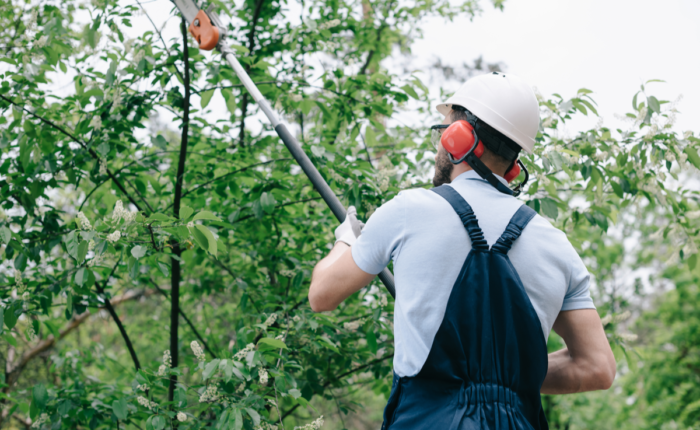Proper tree trimming is essential for maintaining healthy, beautiful trees while ensuring they continue to grow strong and resilient. However, improper trimming techniques can stunt growth, cause structural weaknesses, or even lead to tree death. By following expert tips, you can trim trees effectively without causing harm to their natural development. For those looking for professional help, a tree service Irvine, such as Innovation Tree Service Of Irvine, can provide expert care and maintenance to keep your trees thriving.
Identifying the Right Branches to Remove
1. Focus on Dead or Diseased Branches
Dead or diseased branches are often brittle, discolored, or covered in fungus, making them easy to spot. These branches can weaken the tree and serve as a gateway for infections to spread further. Removing them not only improves the tree’s health but also reduces the risk of falling branches that can cause property damage or injuries. By addressing these issues promptly, the tree can redirect energy toward new, healthy growth.
2. Remove Crossing or Rubbing Branches
Branches that rub against each other can create open wounds, exposing the tree to pests and diseases. These wounds often heal poorly, leading to long-term damage. Trimming these branches early ensures that the tree can grow in a more balanced and healthy manner. Additionally, clearing crossing branches improves air circulation and sunlight exposure, which are vital for overall tree health.
3. Target Low-Hanging or Hazardous Branches
Low-hanging branches can obstruct walkways, driveways, or roofs, posing risks to people and property. Hazardous branches, especially those weakened by storms or disease, are more likely to break off unexpectedly. Trimming these branches not only ensures safety but also helps the tree maintain its natural structure. This proactive approach prevents future issues and keeps the tree thriving.
Avoiding Excessive Trimming in One Session
1. Follow the One-Third Rule
Removing more than one-third of a tree’s branches at once can significantly reduce its ability to photosynthesize. This can leave the tree weakened and unable to produce the energy it needs to grow. By adhering to this rule, you help the tree recover from pruning without compromising its health or vitality.
2. Trim Gradually Over Time
For trees requiring significant pruning, spreading the work across multiple sessions allows the tree to adjust and heal. Gradual trimming prevents shock and reduces the risk of long-term damage. This approach is especially beneficial for mature trees, which may be less resilient to drastic changes.
3. Prioritize Seasonal Timing
Proper timing is of the essence when pruning trees. For most trees, late winter or early spring is the best time to prune because they are in their dormant phase. Pruning during this period minimizes stress and ensures the tree can focus on healthy regrowth during the growing season.
Making Clean Cuts to Promote Healing
1. Use Sharp, Sterilized Tools
Sharp tools make precise cuts, reducing the risk of tearing or damaging the bark. Sterilizing your tools before and after use prevents the spread of disease between trees. Investing in high-quality pruning tools ensures clean, professional cuts that promote faster healing.
2. Cut at the Correct Angle
Making cuts at a 45-degree angle away from the branch collar allows water to run off rather than pool on the wound. This reduces the chance of rot or fungal infections. A proper angle also encourages the tree to form a protective callus over the cut more quickly.
3. Avoid Leaving Stubs
Leaving stubs, or small remnants of branches, can interfere with the tree’s ability to seal the wound. Stubs often become entry points for pests and diseases, compromising the tree’s health. Trimming branches cleanly at their base ensures optimal healing and reduces the risk of decay.
Trimming Away from the Tree’s Trunk
1. Protect the Tree’s Bark
Cutting too close to the trunk can damage the bark and expose the inner wood to harmful elements. The bark acts as a natural barrier against pests and diseases, so preserving it is essential. Always leave the branch collar intact to aid in the healing process.
2. Maintain a Balanced Canopy
Pruning too close to the trunk can lead to an uneven canopy, causing the tree to grow asymmetrically. This imbalance can make the tree more susceptible to environmental stressors like high winds or heavy snow. A balanced canopy not only improves the tree’s appearance but also enhances its structural stability.
3. Reduce the Risk of Decay
Improper cuts near the trunk can leave the tree vulnerable to decay and rot. Over time, this can weaken the tree’s core, leading to potential hazards. By trimming away from the trunk and preserving the branch collar, you minimize these risks and ensure the tree’s longevity.
Understanding the Natural Growth Pattern of the Tree
1. Research Tree Species
Different tree species have unique growth habits and trimming needs. For example, fruit trees often require annual pruning to maximize yield, while shade trees benefit from less frequent trimming. Understanding the specific requirements of your tree ensures optimal results.
2. Retain the Tree’s Natural Shape
Over-pruning or forcing a tree into an unnatural shape can weaken its structure and hinder growth. Preserving the tree’s natural form allows it to thrive and maintain its resilience. A well-shaped tree also enhances the landscape’s visual appeal.
3. Encourage Proper Branch Spacing
Trimming with the tree’s natural growth pattern in mind ensures even branch spacing. This improves airflow and sunlight penetration, reducing the risk of fungal infections and promoting healthy foliage. Proper spacing also makes the tree more robust and less prone to breakage.
Conclusion
Tree trimming is both an art and a science, requiring careful planning and execution to ensure the tree’s health and longevity. By identifying the right branches to remove, avoiding excessive trimming, making clean cuts, and respecting the tree’s natural growth patterns, you can maintain a thriving landscape. For those seeking professional assistance, a trusted tree trimming Irvine service can provide expert care to keep your trees in excellent condition.






